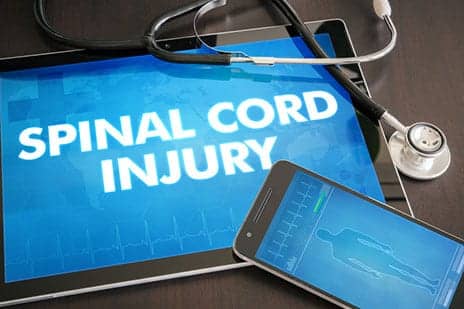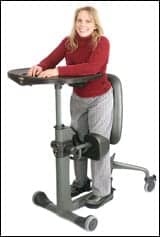Spinal cord stimulation can immediately restore some voluntary movement and autonomic functions such as cardiovascular, bowel, and bladder years after a paralyzing injury without any significant rehabilitation, researchers suggest.
“This was an opportunity to use epidural stimulation, combine my background in mathematics, collaborate with people from multiple disciplines including biomedical engineering and set up a truly innovative trial,” says Dr David Darrow, a neurosurgery resident at the University of Minnesota Medical School and a lead investigator for the E-STAND Clinical trial.
“We wanted to push the envelope for patients. Once we determined it worked, we moved on to knocking down other barriers to translation to patient care,” adds Darrow, also a senior neurosurgery resident at Hennepin Healthcare and University of Minnesota Medical Center.
In a study recently published in the Journal of Neurotrauma, Darrow and his colleagues implanted the first series of female patients who both suffered devastating traumatic spinal cord injury. Both patients had no lower body function whatsoever and MRIs showing very little residual spinal cord at the level of injury. The two women were 5 and 10 years from injury and in their fifth and sixth decade of life, according to a media release from the University of Minnesota Medical School.
“Enabling someone to move her legs more than 10 years after being paralyzed from spinal cord injury has been one of the greatest moments of my career,” states Uzma Samadani, MD, PhD, associate professor in the Department of Neurosurgery University of Minnesota Medical School and Neurosurgeon with Hennepin Healthcare.
In this study, researchers expanded the inclusion guidelines of who could receive epidural stimulation.
“We believe that we are studying a population that is much closer to the general population of patients with spinal cord injury,” Darrow comments. “We have opened the doors to so many more patients with traumatic spinal cord injury.”
“While we are excited for all this could mean for patients, there is still a lot of research to be done, both with this therapy and through other avenues, many of which we are studying at the University of Minnesota,” shares Ann M. Parr, MD, PhD, assistant professor in the Department of Neurosurgery at the University of Minnesota Medical School. Parr has an active translational spinal cord injury research laboratory at the Stem Cell Institute, per the release.
[Source(s): University of Minnesota Medical School, EurekAlert]





